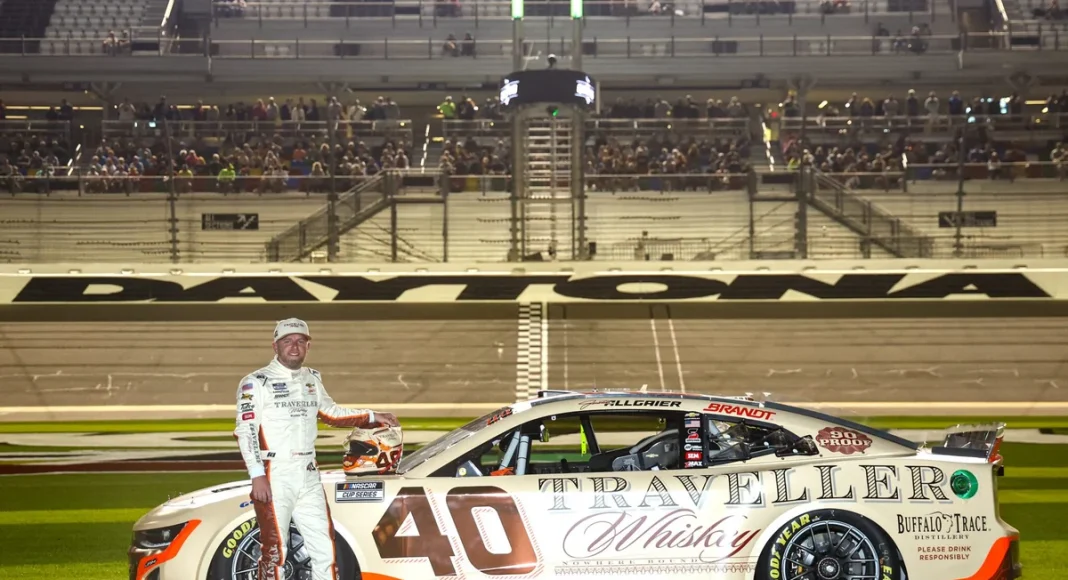Dale Earnhardt Jr. has expressed concerns regarding Chevrolet’s prospects at the upcoming Daytona 500, as Chevy teams prepare to debut a new car body at one of NASCAR’s most demanding superspeedways. This potential setback comes as the Daytona 500, a pivotal event for the Dale Earnhardt Jr Daytona 500 narrative, initiates the racing season with heightened expectations and uncertainties for Chevrolet teams.
Dale Earnhardt Jr. Raises Concerns Over Chevy’s New Design at Daytona
As the NASCAR Hall of Famer and his team ready themselves for another season, a spotlight has fallen on the implications of Chevrolet’s overhaul. Earnhardt Jr. stated on his Dale Jr. Download podcast that introducing a redesigned car body regularly yields unpredictable outcomes, especially when first appearing at high-speed superspeedways such as Daytona and Talladega.
“I’m nervous because we’re going to have a new body, right?”
– Dale Earnhardt Jr., NASCAR Hall of Famer
According to Earnhardt, debuts of new manufacturer bodies seldom lead to immediate triumph at the likes of Daytona, as crews grapple with understanding how fresh aerodynamic features react in the distinct environment these tracks present. The new Chevy body is primarily tailored for intermediate and short oval circuits—venues that dominate the NASCAR calendar—leaving uncertainties about its effectiveness under the intense pack racing and drafting unique to Daytona.
Manufacturer Strategies and Challenges on Superspeedways
Earnhardt detailed the collaborative nature of NASCAR development, explaining that manufacturers and teams work jointly to introduce modifications—from subtle body character lines to nose configuration changes—aimed at enhancing competitiveness.
“Typically, anytime a manufacturer gets a new body, they don’t really go to Daytona and perform better. You’re figuring out what makes that body perform at a track like that.”
– Dale Earnhardt Jr., NASCAR Hall of Famer
He noted that choices benefiting races at tracks like Charlotte or Richmond—namely, creating more downforce and side force for added stability—can add drag, hindering straight-line speed essential for success in superspeedway settings. NASCAR closely reviews and tests these adjustments to prevent any single manufacturer from gaining an outsized advantage, ensuring fair competition across the field.
“Their intention anytime any of the manufacturers change the body is to make their cars more competitive at the tracks we race the most. They’re always trying to put a character line in there, fudge a little quarter panel, or adjust the nose in such a way, working with the teams: ‘Hey man, this is what we need. This would make us better. Can we get it passed through? NASCAR runs it through tests to make sure it’s not a massive advantage compared to the other manufacturers,”
added Earnhardt. – Dale Earnhardt Jr., NASCAR Hall of Famer
Adapting to a Year of Learning
Earnhardt Jr. highlighted that the adjustment process following a body redesign typically takes months. Teams and manufacturers often require at least half a season to assemble meaningful data, refine setups, and maximize potential from the changes. In the interim, teams may face competitive disadvantages on certain tracks.
“There’s a learning period, a year, half a year, or three-quarters of a year, where they’re trying to figure out the platform, how it performs best, and how the car needs to be set up,”
he said. – Dale Earnhardt Jr., NASCAR Hall of Famer
This learning curve is particularly significant at superspeedways, where aerodynamic precision is critical, and competitors have little time to adapt before the flagship race.
“That’s why some manufacturers might go to Daytona and Talladega and say, ‘Guys, you’re going to be a little handicapped here because this body is great everywhere else we go, but it’s going to be tough here.’”
– Dale Earnhardt Jr., NASCAR Hall of Famer
The Road Ahead for Chevrolet and the Daytona 500
Despite Chevrolet’s historic strength at superspeedways, launching a new body at the season’s start may leave teams playing catch-up as they seek optimal setups for Daytona’s unique demands. Earnhardt Jr.’s comments underscore a cautious approach, as teams and manufacturers, including Chevrolet, must balance gains across the wider season with the specific requirements of the Daytona 500.
As the season gets underway, all eyes will be on how quickly Chevrolet and its allied teams can adapt and overcome these early challenges, with Dale Earnhardt Jr. and other NASCAR figures keenly evaluating the results at Daytona and beyond.



